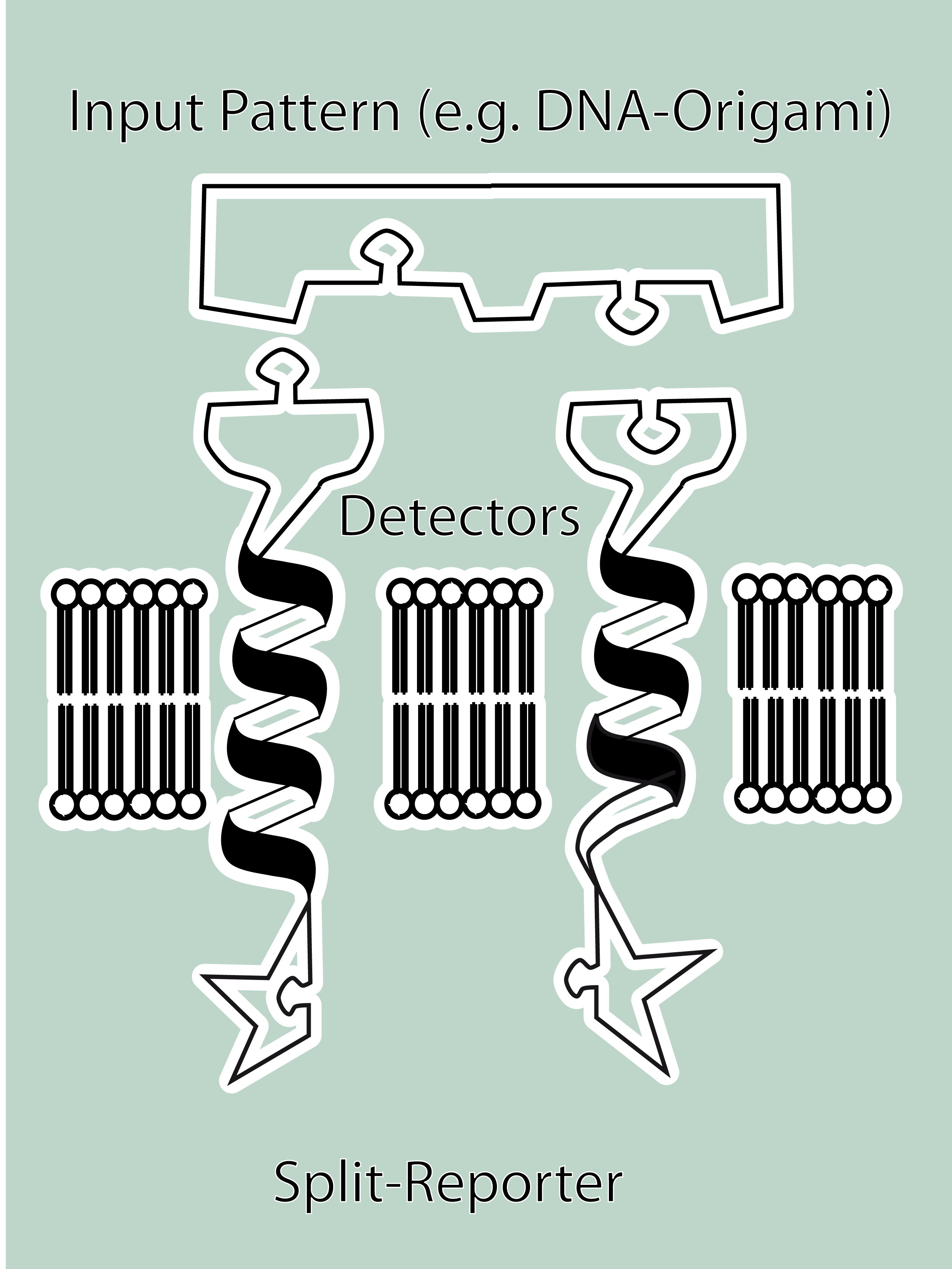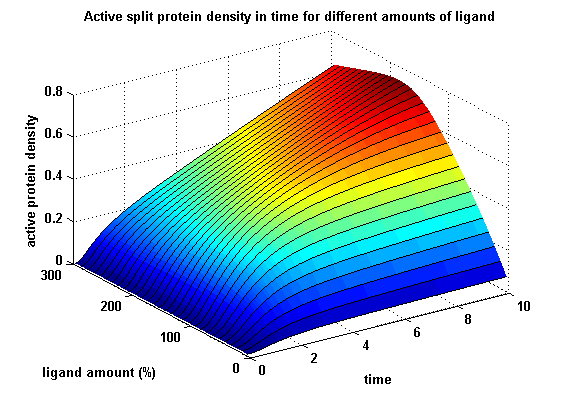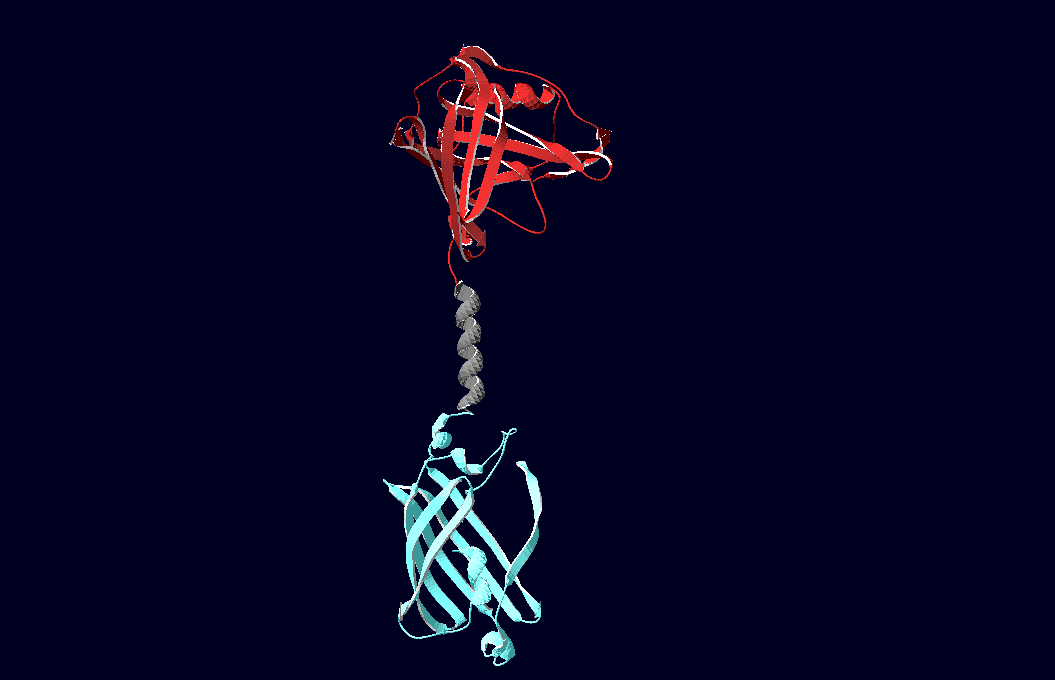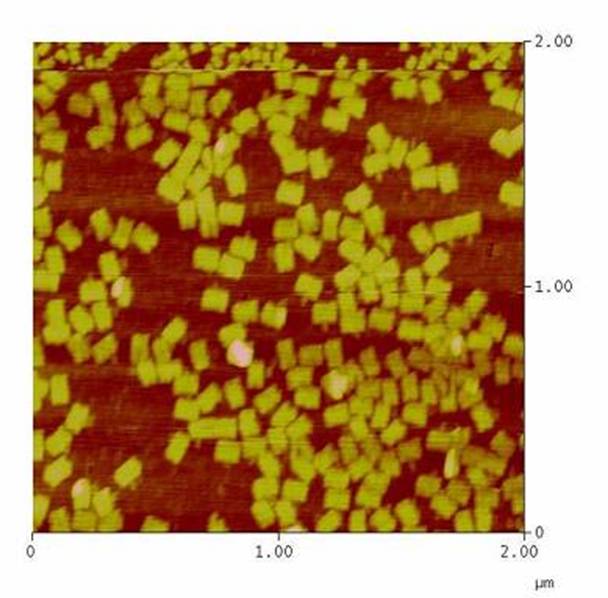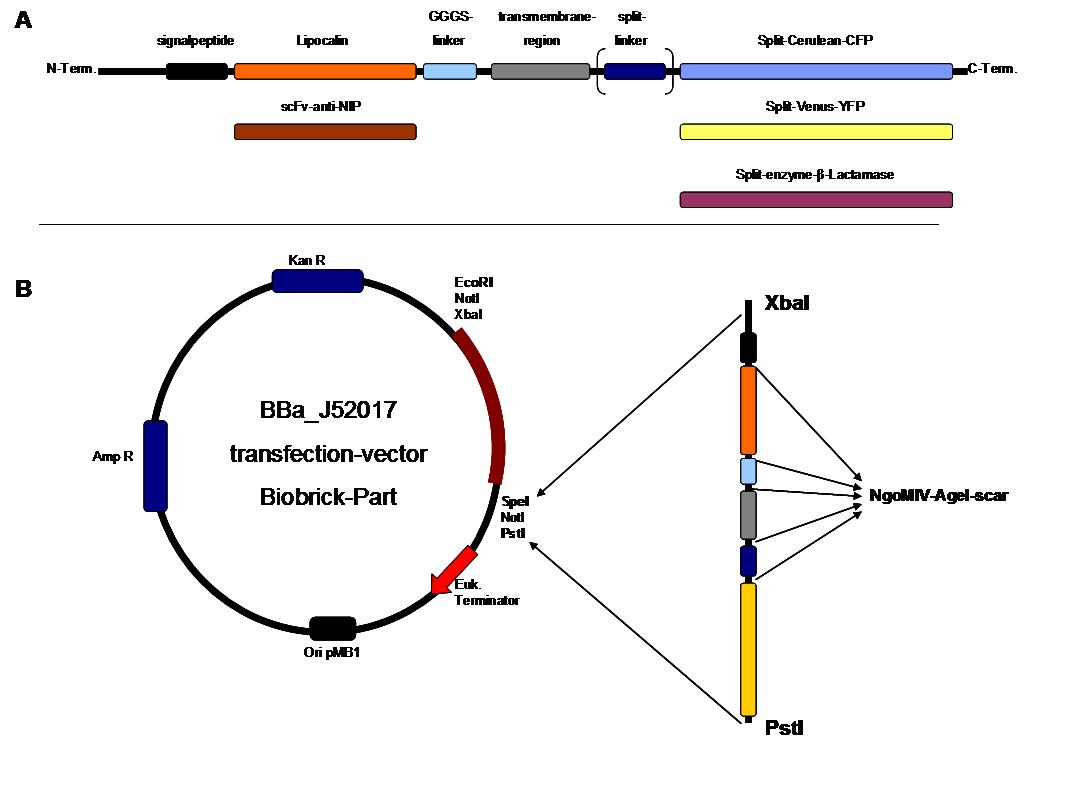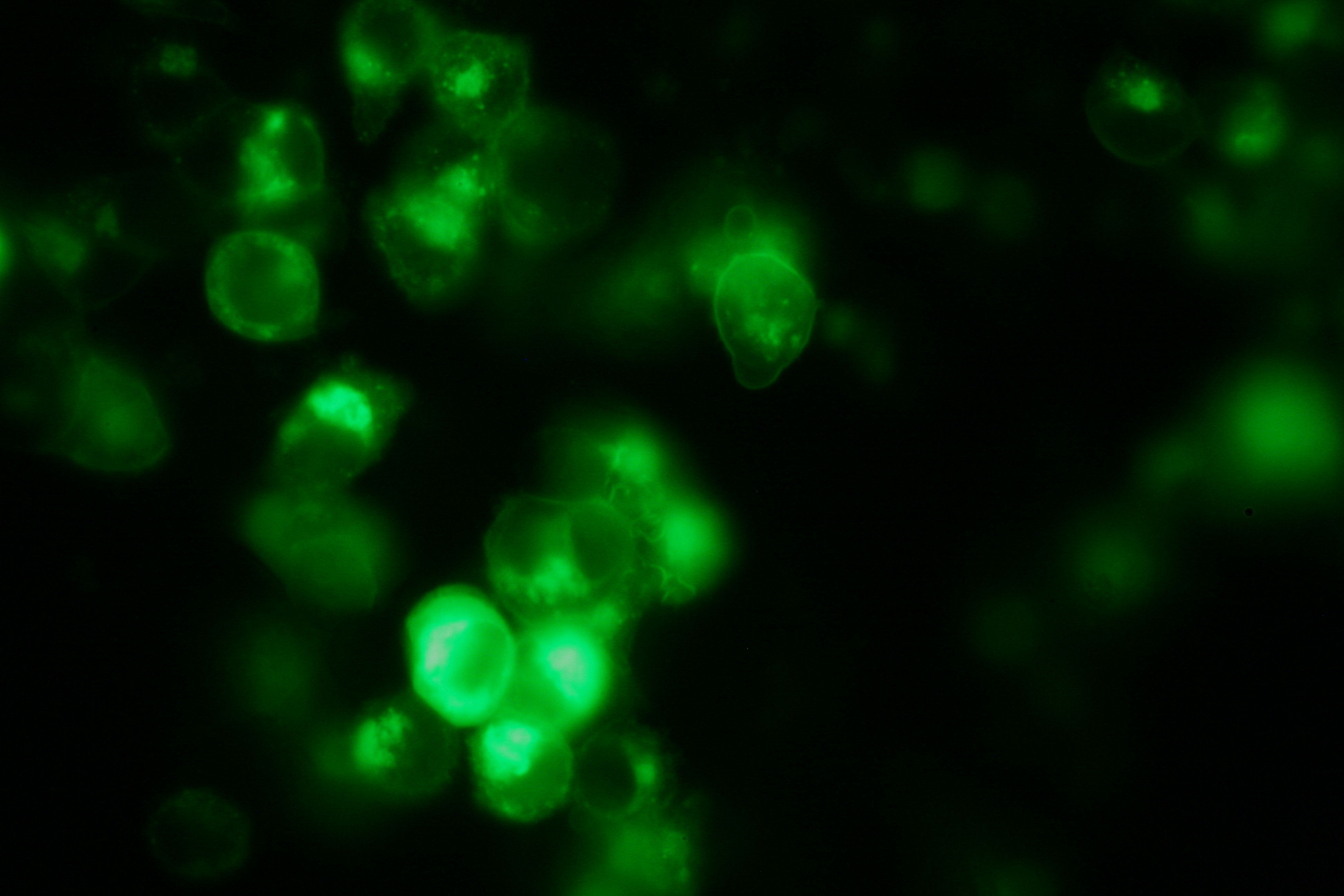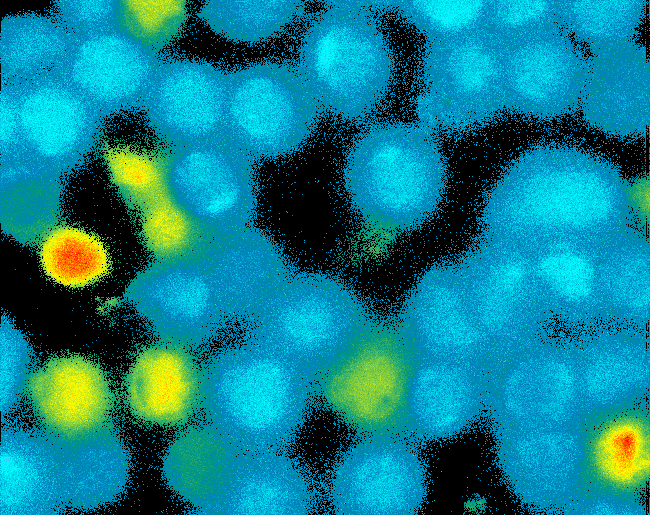Team:Freiburg/Project
From 2008.igem.org
m |
m |
||
| Line 74: | Line 74: | ||
<td> | <td> | ||
<h4>[[DNA-Origami|DNA-Origami]]</h4> | <h4>[[DNA-Origami|DNA-Origami]]</h4> | ||
| - | The creation of DNA-Origami was one of the first sub-projects we engaged in. Structural planing of the input pattern on the Origami-surface and order of the modified oligo-nucleotides were the first issues, increasing of the Origami-yield and measurement of the molecule´s stability in cell culture media the latter ones. | + | The creation of DNA-Origami was one of the first sub-projects we engaged in. Structural planing of the input pattern on the Origami-surface and order of the modified oligo-nucleotides were the first issues, increasing of the Origami-yield and measurement of the molecule´s stability in cell culture media the latter ones.<br> |
</td> | </td> | ||
<td> | <td> | ||
| Line 90: | Line 90: | ||
<h4>[[Team:Freiburg_Cloning Strategy|Cloning Strategy]]</h4> | <h4>[[Team:Freiburg_Cloning Strategy|Cloning Strategy]]</h4> | ||
All of our constructs were cloned successfully using our extended pre- and suffix and plasmid "pMA" (part Bba_K157000). The broad combinatorial range given by the modular concept was almost fully exploited, so that we ended up with the submission of 13 basic and 28 composite parts.<br> | All of our constructs were cloned successfully using our extended pre- and suffix and plasmid "pMA" (part Bba_K157000). The broad combinatorial range given by the modular concept was almost fully exploited, so that we ended up with the submission of 13 basic and 28 composite parts.<br> | ||
| - | Once a construct was completed, it was cloned into the CMV-promoted transfection vector (part Bba_K157040) and used for transfection of 293T-cells. | + | Once a construct was completed, it was cloned into the CMV-promoted transfection vector (part Bba_K157040) and used for transfection of 293T-cells.<br> |
</td> | </td> | ||
</tr> | </tr> | ||
| Line 115: | Line 115: | ||
<td> | <td> | ||
<h4>[[Team:Freiburg_Calcium Imaging|Cell Stability, Ca2+ Signaling and DNA-Origami-Binding]]</h4> | <h4>[[Team:Freiburg_Calcium Imaging|Cell Stability, Ca2+ Signaling and DNA-Origami-Binding]]</h4> | ||
| - | Due to the small total amounts of DNA-Origami we could not use FACS to measure calcium influx and, thus, T-cell activation. The alternative we found were "Nano-Slides" for inverse fluorescence microscopy; T-cells were immobilized on the poly-L-Lysine coated slides and stimulated directly under the microscope. This procedure allowed real-time observation of calcium-influx. | + | Due to the small total amounts of DNA-Origami we could not use FACS to measure calcium influx and, thus, T-cell activation. The alternative we found were "Nano-Slides" for inverse fluorescence microscopy; T-cells were immobilized on the poly-L-Lysine coated slides and stimulated directly under the microscope. This procedure allowed real-time observation of calcium-influx. <br> |
</td> | </td> | ||
</tr> | </tr> | ||
Revision as of 00:39, 30 October 2008
|
Project Report |
_project report
SummaryModular Synthetic Receptor System In the following we provide a summary of our project and display the highlights of our achievements. For a more detailed view please see the reports of each subproject. The general goal of the Freiburg 2008 team is to establish a synthetic transmembrane receptor system comprising the extracellular input devices, the extracellular receiver domain, the transducer to the cytosol and the reporter/executor in the cytosol. To facilitate binding, we used a single-chain Fv antibody fragment and a designed anticalin. Both bind haptens (nitro-jodo-phenol and fluorescein) which can be conjugated to specific oligonucleotides of the DNA-Origami or scaffold proteins. Transduction to the cytosol is mediated by a single transmembrane helix. As intracellular reporters we employ split proteins. Here, we used the split lactamase from the iGEM2007 Freiburg project as well as the split fluorescent proteins CFP/cerulean and YFP/venus. To provide steric flexibility and reach of our binding and reporting modules we interspersed linkers between each functional domain. All parts submitted feature full BioBrick-compatibility and in addition allow for the construction of fusion proteins due to extended Biobrick 3.0 standard. Cloning was done in E. coli. However, we test our receptors in human or mouse cells/chassis. Thus, to direct our constructs to the cell surface we attached a eukaryotic signal peptide taken from hEGF-R to the N-terminus of each synthetic receptor. In addition to our designed synthetic receptors, we initially also employed an existing T-cell line displaying a TCR fused to a single chain. To reach our goal within the short given time frame we started several subprojects in parallel. Our subprojects listed here are defined along these projects. Besides designing and cloning parts we spent quite some time on establishing and analyzing the biological experiments. Initially we tested interfacing of DNA origami with cells and the spatial control via DNA origami using an existing cell line expressing the scFv fused to a T-cell receptor. In our experiments we addressed the following questions: - Can we improve DNA origami assembly yield by varying the staple oligonucleotide to scaffold DNA ratio? In our modeling analyses we constructed various sets of differential equations for the activation of our synthetic receptors and predicted split protein activation behaviour. The labs of Kristian Müller and Katja Arndt provided all basic technology and support to get started. For advanced analyses several labs of the University of Freiburg and the Max-Planck-Institute of Immunobiology granted access to their instrumentation (e.g. atomic force micoscopy, confocal microscopy, FACS).
SubprojectsModeling Highlights
LiteratureSplit-fluorophores: |
 "
"

